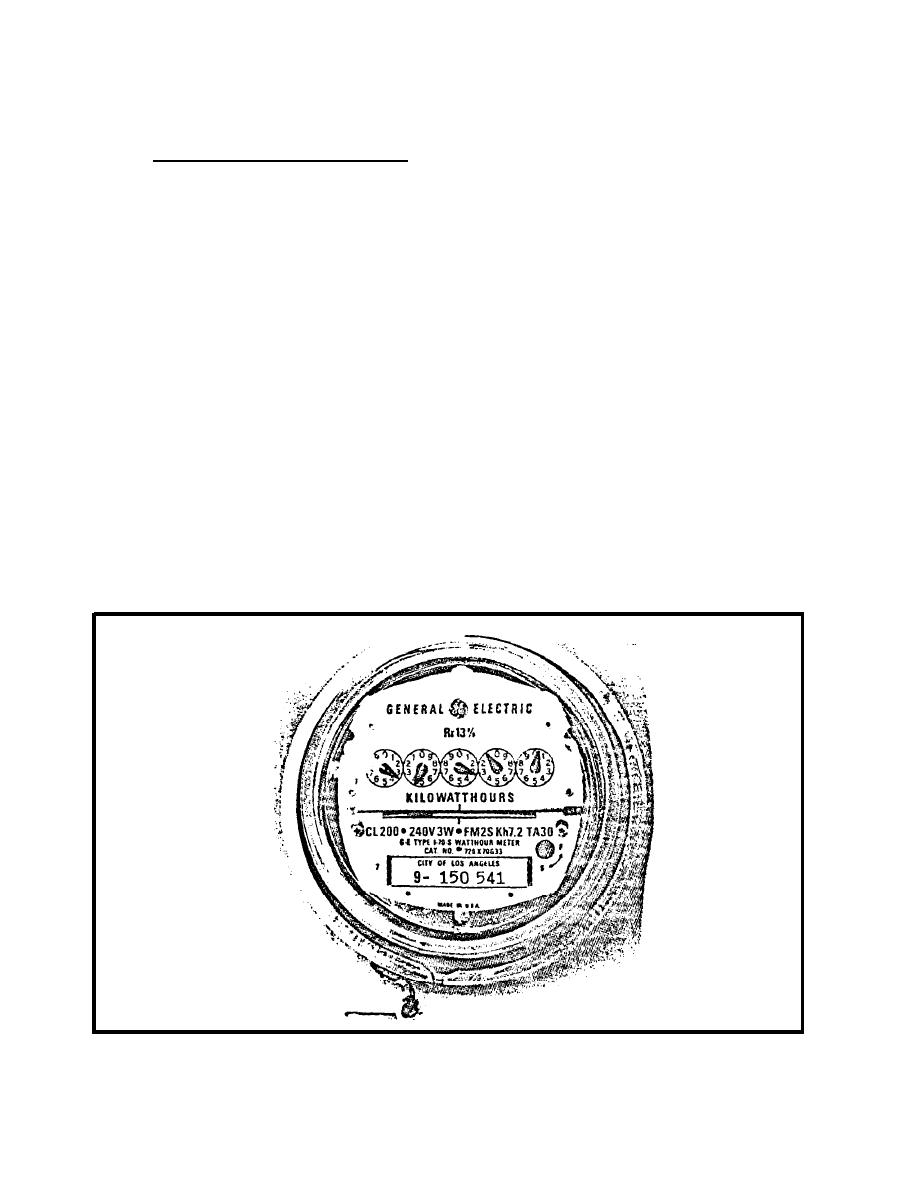

Custom Search
|
|

|
||
 2.2 Permanent Kilowatthour Meter. A typical kilowatthour meter is shown in
Figure 9-8. Watthour meters are commonly known by the type of electrical
system for which they are designed , such as 3-wire single phase and 4-wire
delta or wye meters. Basic characteristics of a typical kilowatthour meter
are as follows:
Configuration: Kilowatthour meters are available to measure energy
q
consumption for all types of single and polyphase circuits. Two types
of mountings are available: hard-wired A-type meter and socket and
plug-in, S-type meter. In addition to standard registers, three
options are available: time-of-use register, demand register, and
pulse initiator.
Register: Totalized kilowatthours (kWh) are displayed either in a
q
four or five circular dial arrangement, or in digital form.
Range: Self-contained meters are designed for services of up to 200
q
amperes and 600 volts. For higher voltages and currents, potential
and current transformers are required. In many situations, for safety
considerations, a potential transformer (PT) is preferred when
voltages exceed 277 volts.
Accuracy: Utility companies usually specify an accuracy of2 percent
q
and conformance to American National Standards Institute (ANSI) c-12
series standards.
FIGURE 9-8.
Kilowatthour Meter
9-17
|
 |
|
 |
||